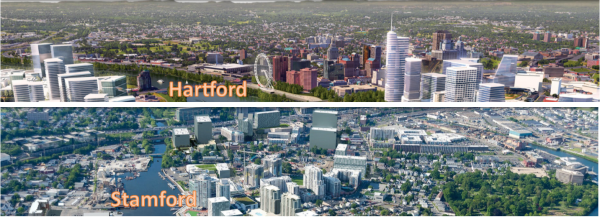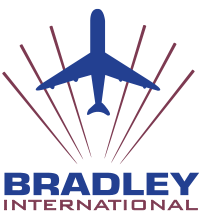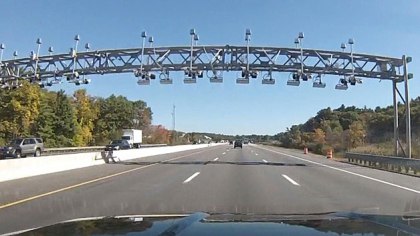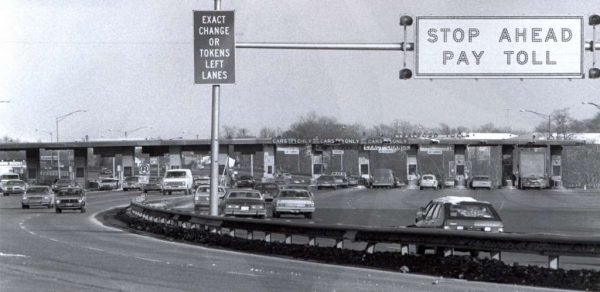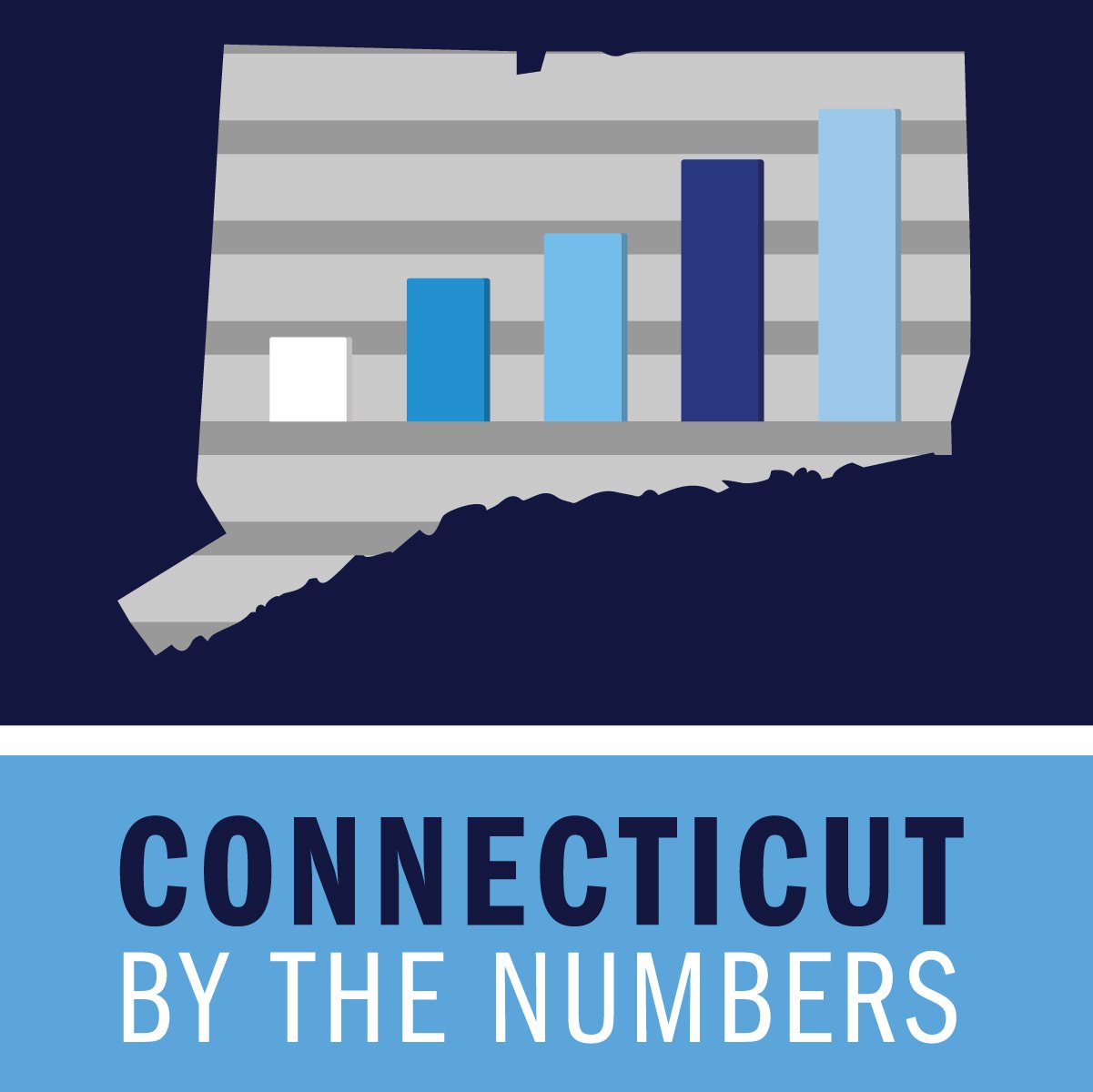Hartford Region Coalition Embarks on Development of Economic Strategy
/A coalition of prominent business, transportation and community development organizations in the Hartford Metropolitan Region has begun the process of taking a fresh look at its position in the global economy, with an eye toward taking advantage of economic opportunity.
In announcing the initiative, the organizations noted that the region and the state have struggled to recover from the 2008 recession and that global, national, and local trends are reshaping the region’s economy. The state and many of the region’s 38 municipalities face increasingly difficult fiscal situations that hamper their ability to pursue projects that will lead to growth, officials said.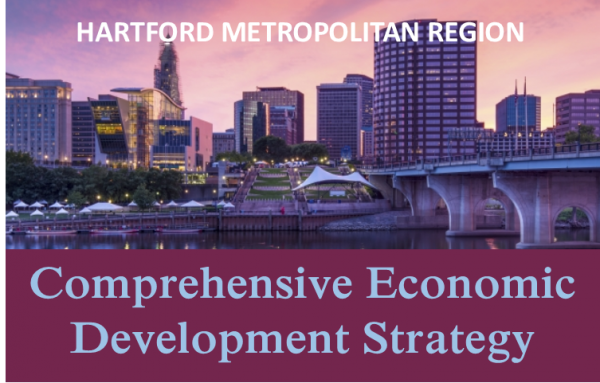
Recognizing that these trends, if left unaddressed, can dramatically impact the region, the organizations – the Capitol Region Council of Governments (CRCOG), Hartford Foundation for Public Giving (HFPG) and MetroHartford Alliance - will be working as an advisory committee to develop a new Comprehensive Economic Development Strategy (CEDS) for the Hartford Metropolitan Region. The most recent strategy was developed in 2012, and a previous effort took place in 2006.
“This strategy will take a hard look at the region and identify and prioritize the most promising opportunities for creating lasting economic growth. This region is a leader in insurance, finance, and advanced manufacturing; we need to build on these strengths to encourage the kind of growth that will lead to lasting fiscal stability,” said Jim Scannell, Senior Vice President, Administrative Services, at Travelers and co-chair of the CEDS Advisory Committee.
The effort gets underway with new leadership at the helm at a number of the organizations, which may impact the perspective along the way, if not the final results. Led by the CRCOG, and longtime Executive Director Lyle Wray, the initiative is in partnership with the Hartford Foundation, where President Jay Williams, a former Assistant Secretary of Commerce for Economic Development and mayor of Youngstown, OH relocated to the region last year, and the MetroHartford Alliance, which hired David Griggs, mostly recently leading economic development efforts in Minneapolis-St.Paul as its new President and CEO. Williams joins Scannell as co-chair of the CEDS Advisory Committee.
The consulting firm of Fourth Economy Consulting has been hired to help the region complete a situational assessment and develop “game changer” initiatives to serve as the core of a new economic development strategy. Fourth Economy, based in Pittsburgh, recently worked with the 100 Resilient Cities initiative to help cities around the world become more resilient to economic changes.
The process will be led by an advisory committee comprised of representatives of businesses, governments, educational institutions and non-profits throughout the region. A smaller working group, comprised of partner organizations like the New Britain Chamber of Commerce, will work closely with the consulting team and the advisory committee to develop a regional vision and turn it into an actionable plan.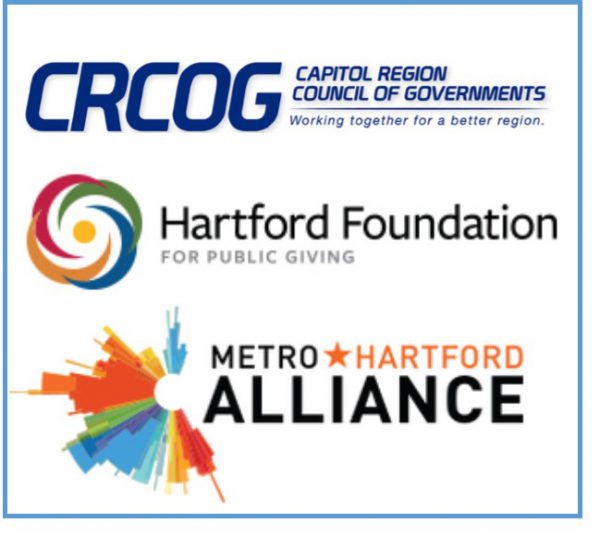
Four primary tasks have been identified for the initiative:
- Goal-Setting: Build consensus around the need for accelerating inclusive/equitable economic growth; that is raising incomes across the income distribution with particular attention to opportunities for engaging those who have often been left behind.
- Situational Analysis: Do a clear-eyed assessment of our situation: who, what, where to identify opportunities that we should be pursuing as a metropolitan region (i.e., SWOT with an emphasis on context and opportunities).
- Strategic Planning: Formulate a limited number of “game changer” strategies that will move the trajectory of inclusive economic growth in the right direction.
- Capacity-Building: Identify organizational forms and collaborations that we will need to implement and sustain the strategies over time.
During this process the Advisory Committee will also identify potential partner organizations and set up an organizational structure to implement the initiatives. A final strategy report is due next winter. CRCOG has set up a website that already includes key resources, and will be updated as the work proceeds during the year.
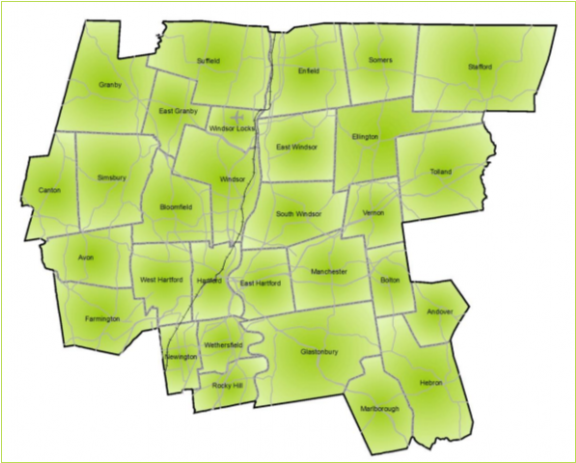 “There is only one way our region will achieve equitable and sustainable economic growth. We must eschew the past squabbles and divisions that have kept us mired in anemic progress,” said Jay Williams, president of the Hartford Foundation and co-chair of the CEDS Advisory Committee. “If we commit to a bold, collaborative, and pragmatic approach, we can develop a roadmap to capitalize on the enormous talent and multiple assets our region possesses. I’ve seen the success of this approach in other parts of the country and there is absolutely no reason it can’t occur here, unless we lack the collective will to make it happen.”
“There is only one way our region will achieve equitable and sustainable economic growth. We must eschew the past squabbles and divisions that have kept us mired in anemic progress,” said Jay Williams, president of the Hartford Foundation and co-chair of the CEDS Advisory Committee. “If we commit to a bold, collaborative, and pragmatic approach, we can develop a roadmap to capitalize on the enormous talent and multiple assets our region possesses. I’ve seen the success of this approach in other parts of the country and there is absolutely no reason it can’t occur here, unless we lack the collective will to make it happen.”
Similar efforts occur throughout the state led by various economic development regions. The WestCOG Region’s first Comprehensive Economic Development Strategy (CEDS) was developed throughout 2017. WestCOG includes 18 towns in the Stamford - Norwalk - Danbury region of the state. Public comment on the draft plan was solicited last fall.
The state’s South Central Connecticut region, centered around New Haven, undertook a similar effort in 2013, which has been updated annually. The Strategic Planning Committee and sector subcommittees have been established for 2018, and are currently gathering data and input from community stakeholders, according to the website for that region’s economic strategy planning initiative. It is led by Economic Development Corporation of New Haven, a private, non-profit organization, dedicated to business and economic development within the city of New Haven and REX Development, which was formed as the economic development entity for the fifteen towns served by the South Central Regional Council of Governments (SCRCOG).
Of the Hartford region’s CEDS initiative, East Hartford Mayor Marcia Leclerc, the Chair of the CRCOG Policy Board said “Our metropolitan region needs to competitively position itself for the future in relation to other regions in the country, as well as globally. To do that we need to take a hard look at our current situation and our opportunities.”


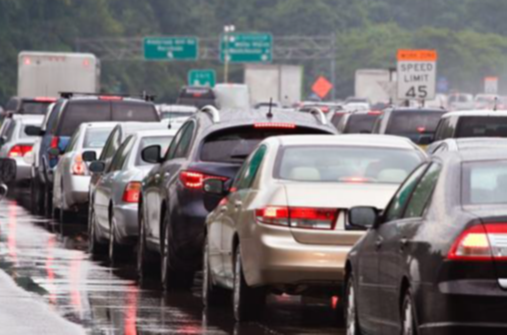

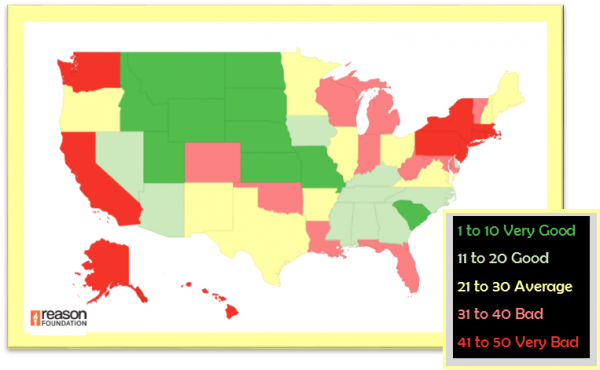 Reason Foundation’s Annual Highway Report ranks the performance of state highway systems in 11 categories, including spending per mile, pavement conditions, deficient bridges, traffic congestion, and fatality rates. At the bottom were New Jersey, Rhode Island, Alaska, Hawaii and Connecticut. Topping the list were North Dakota, Kansas, South Dakota, Nebraska, South Carolina and Montana. New York and Massachusetts were also in the bottom ten, ranked just above Connecticut.
Reason Foundation’s Annual Highway Report ranks the performance of state highway systems in 11 categories, including spending per mile, pavement conditions, deficient bridges, traffic congestion, and fatality rates. At the bottom were New Jersey, Rhode Island, Alaska, Hawaii and Connecticut. Topping the list were North Dakota, Kansas, South Dakota, Nebraska, South Carolina and Montana. New York and Massachusetts were also in the bottom ten, ranked just above Connecticut. The report also considered costs related to state roads and bridges.
The report also considered costs related to state roads and bridges.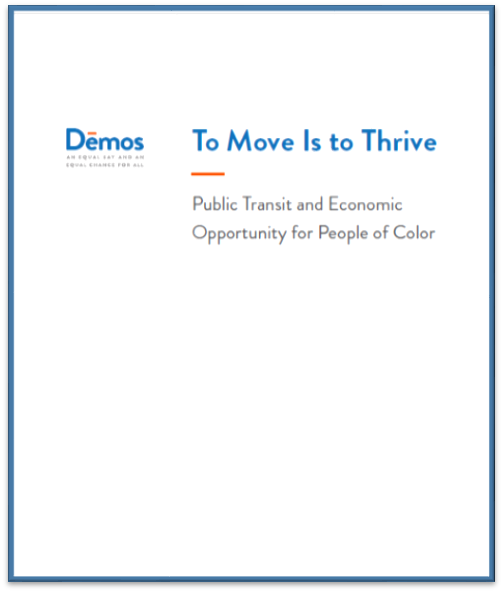
 The key findings on the jobs benefits from investment in public transit are:
The key findings on the jobs benefits from investment in public transit are: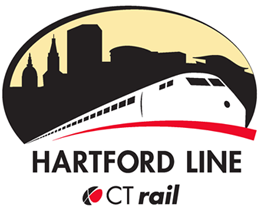

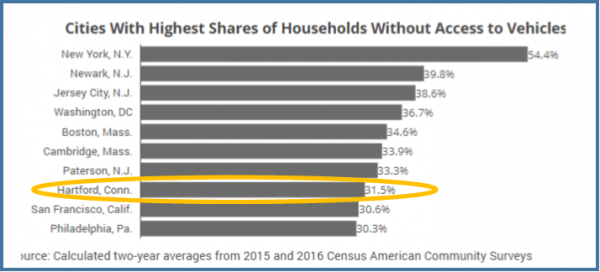 Hartford has a presence in the top 10 cities that already have among the highest share of households without a car, at a 31.5 percent two-year average. Hartford ranks 8th. The list is led by New York City at 54.4 percent, with Newark, Jersey City, Washington, Boston, Cambridge and Paterson in between. San Francisco and Philadelphia round out the top 10 after Hartford. Hartford increased from 30.3% in 2015 to 32.6% in 2016.
Hartford has a presence in the top 10 cities that already have among the highest share of households without a car, at a 31.5 percent two-year average. Hartford ranks 8th. The list is led by New York City at 54.4 percent, with Newark, Jersey City, Washington, Boston, Cambridge and Paterson in between. San Francisco and Philadelphia round out the top 10 after Hartford. Hartford increased from 30.3% in 2015 to 32.6% in 2016.



 Once underway, the new daily service will mean that from New Haven to Hartford, trains will increase from six to 17 per day. Between Hartford and Springfield, trains will increase from six to 12 per day. A new station in North Haven station is currently being designed, and is not due to be built and open until 2020. Stations in Enfield, Newington, West Hartford, Windsor and Windsor Locks stations are also part of the Hartford Line plans. Trains will arrive at stations in New Haven, Wallingford, Meriden, Berlin and Hartford every 45 minutes during peak hours and every 60 to 90 minutes during off-peak periods.
Once underway, the new daily service will mean that from New Haven to Hartford, trains will increase from six to 17 per day. Between Hartford and Springfield, trains will increase from six to 12 per day. A new station in North Haven station is currently being designed, and is not due to be built and open until 2020. Stations in Enfield, Newington, West Hartford, Windsor and Windsor Locks stations are also part of the Hartford Line plans. Trains will arrive at stations in New Haven, Wallingford, Meriden, Berlin and Hartford every 45 minutes during peak hours and every 60 to 90 minutes during off-peak periods.
 “It’s a scene repeating itself in dying suburban malls around the country,” the Globe reported, “a sweeping economic disruption known as the Amazon effect.” Industry analysts have predicted that 20 percent of the 1,200 shopping malls in the U.S. will “meet their demise,” the Globe indicated.
“It’s a scene repeating itself in dying suburban malls around the country,” the Globe reported, “a sweeping economic disruption known as the Amazon effect.” Industry analysts have predicted that 20 percent of the 1,200 shopping malls in the U.S. will “meet their demise,” the Globe indicated.
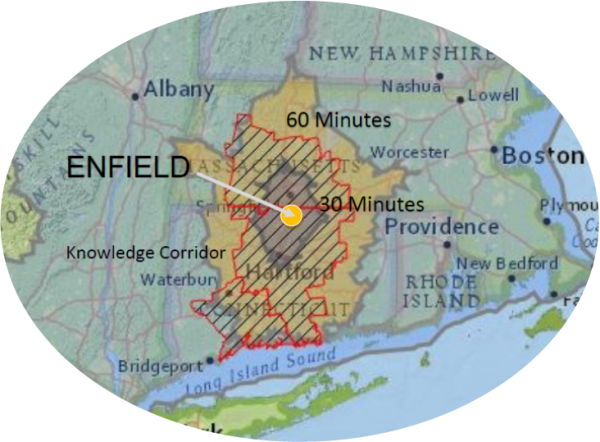 Knowledge Corridor, Enfield provides quick and easy access to several US Highways, airports and rail systems," the 12-page Enfield proposal explained. "Tax Increment Financing (TIF) districts are being created in Enfield and surrounding towns to support new development and growth. Abatements and Regional Revenue Sharing are all available to sweeten the deal. Connecticut has the lowest corporate tax rate in the North East."
Knowledge Corridor, Enfield provides quick and easy access to several US Highways, airports and rail systems," the 12-page Enfield proposal explained. "Tax Increment Financing (TIF) districts are being created in Enfield and surrounding towns to support new development and growth. Abatements and Regional Revenue Sharing are all available to sweeten the deal. Connecticut has the lowest corporate tax rate in the North East."
